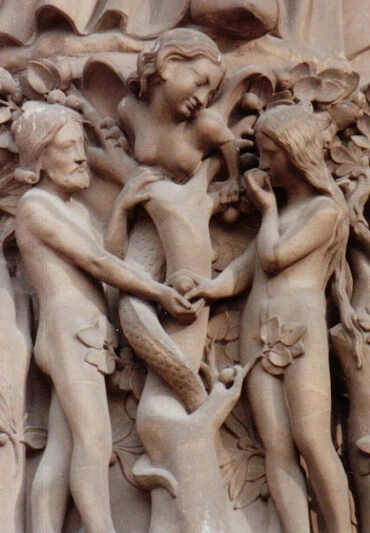
Feeling life as their own (represented by the woman), the people of the Most Ancient Church felt an overwhelming desire to think from themselves about the nature of God ("good" and "food" both relate to desire, either for good or evil), and supported that desire with twisted logic ("pleasant" and "eyes" both relate to the intellect, either for good or evil). On top of that, the idea of being "wise," of potentially knowing what God knew, filled them with pleasure (it was "to be desired"). So they "ate the fruit"; they began exploring the nature of divinity, with an eye toward having divine knowledge themselves.
But there was hesitation. They still knew what they had been commanded, and the rational parts of their minds (represented by the "man," used here in a masculine sense) had to be pulled in. But they were; the "man" ate the fruit as well.
(Референци:
Arcana Coelestia 207, 208, 209)







